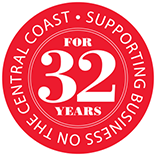Census highlights a divided community
)
The ABS has just released the first tranche of data from the 2021 Census., more will be released in October but in the meantime we can get a good look at what the Central Coast looks like in terms of demographics.
CCBR has started work on analysing this data looking at the population increase, how old we are, how much we earn and what is costs to pay off or rent a home.
On Page 6 you will see a brief Community Profile of Gosford, Terrigal and the main growth areas to the north: Hamlyn Terrace, Wadalba and Woongarrah – all compared with 2016, 5 years ago.
Also, on Page 19 we have briefly analysed the Community Profiles for all of the Central Coast – by Post Code (2250 to 2263).
They make interesting reading if you are that way inclined!
Overall, the region’s population grew 5.75% over the past five years, down a little from the previous two periods but generally around 1% per year as predicted by the NSW Department of Planning.
Point is that most of this growth has been in the north due to a Wyong Council that was very active in approving residential subdivisions that saw thousands of homes built and young families move in.
Population growth in the north from 2016 to 2021 was 25.4%.
It is also worth noting that the Median Age of the population in Hamlyn Terrace, Wadalba and Woongarrah is 35 years. Elsewhere, across the Coast, the Median Age as around 46 years.
The divide between young and old is stark.
Going back 40 or so years Wyong Council planned for this population growth in the north, initially around Warnervale. As part of that growth they knew that the area would need amenities such as a shopping centre, picture theatres, swimming pool and other community facilities.
It was to be known as the Warnervale Town Centre and located on Sparkes Road – it was a large area.
Within the shopping centre there was to be a Coles Supermarket. Woolworths, who had closed down a number of supermarkets in the north because they saw no future eventually took note and realised they had missed the boat.
Not to be put off they hunted around and found some rural zoned land on the main railway line which they acquired and got rezoned for their own shopping centre.
Their first moves were to get Wyong Council to dump the Warnervale Town Centre, get State Rail to build a new railway station, a few kilometres from the Warnervale Station, right smack in the centre of their shopping centre o that they would control the retail market across the north.
Community facilities as planned with the Warnervale Town Centre did not exist under Woolies’ plans.
Regrettably, Wyong Council went along with them.
In the end Woolworths found they couldn’t get any traction with their tactics. Their property was on the side of the hill, the area promoted for the new railway station has environmental issues on it.
So, today, with a young, growing population in our north the essential community facilities planned by a forward thinking Wyong Council (until Woolies came along) do not exist.
I mention this as it is a history lesson worth noting.
Meanwhile, further to the south in Gosford, the Capital City of the Central Coast, the only planning that took place was to stop any growth at all.
A moribund Gosford got shaken up in a few short years between 2013 and 2016 with the advent of the McKenna/ Anderson Gosford Council taking the breaks off during their short term from 2013 until 2016 when the councils were amalgamated.
The 2021 Census shows us how Gosford has grown from 3,499 in 2016 to 4,873 in 2021 – an increase of almost 40% (admittedly off a low base).
The lesson from all this is that local government drives local communities for good or for worse.
When the two councils were amalgamated in 2016 the Central Coast had the world at it feet.
The tragedy of the failure of Central Coast Council has its genesis in the way the State Government set it up to fail.
Instead of two divided communities we got five divided communities and a parliament of fifteen (fifteen) councillors the majority of whom had their own agendas that guaranteed that failure.
Six years, and counting, down the drain.
Our present State Government won’t listen but hopefully a new government in March next year might see reality and scrub the divisive Ward System so that the Central Coast can become one cohesive community with ten councillors who have to think globally.
Wishful thinking, I know but worth considering just the same.
Right now we need to continue supporting the Administrator and CEO of this council so that whoever gets elected in September next year will have a sound organisation which they can not wreck.
Edgar Adams
Editor
| Tags:Editorial |


